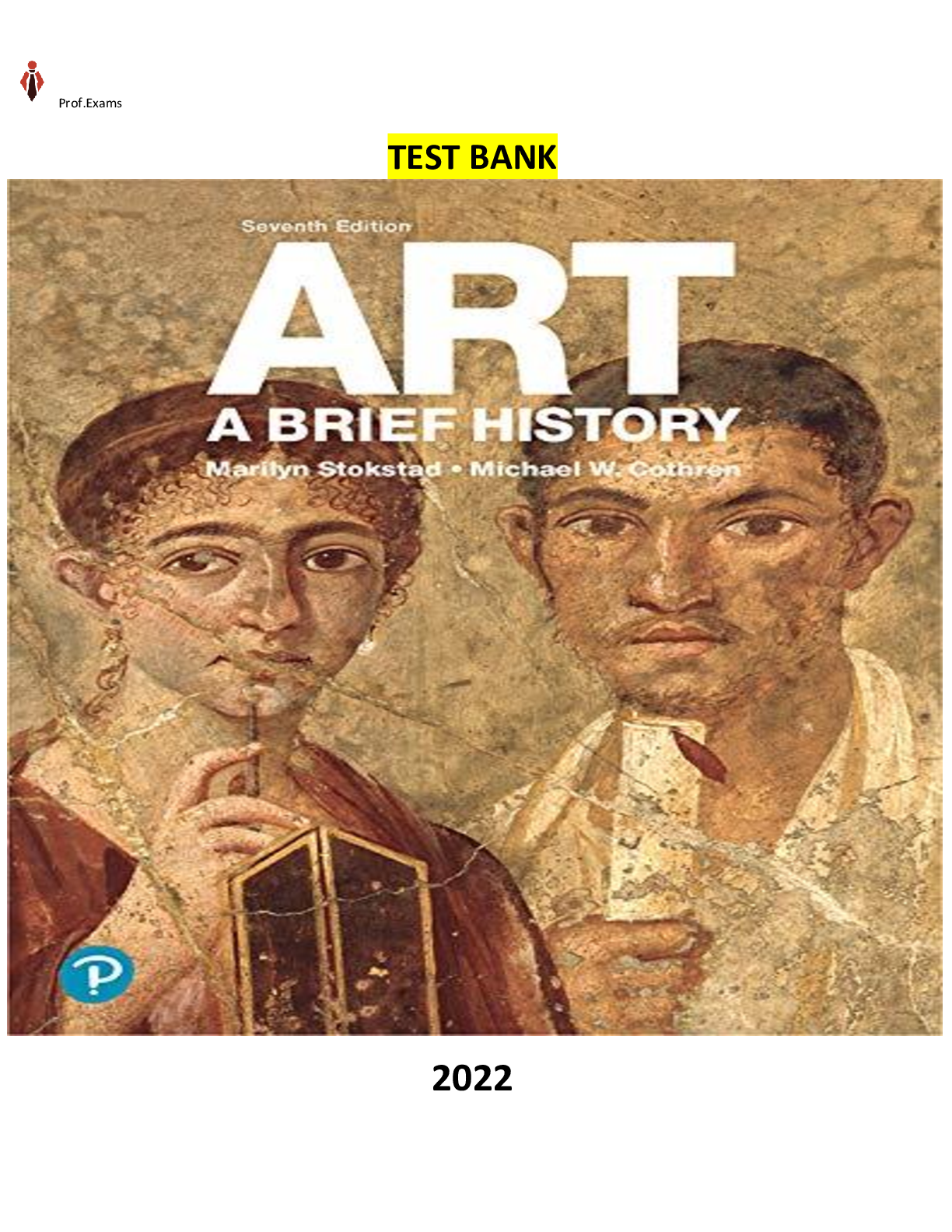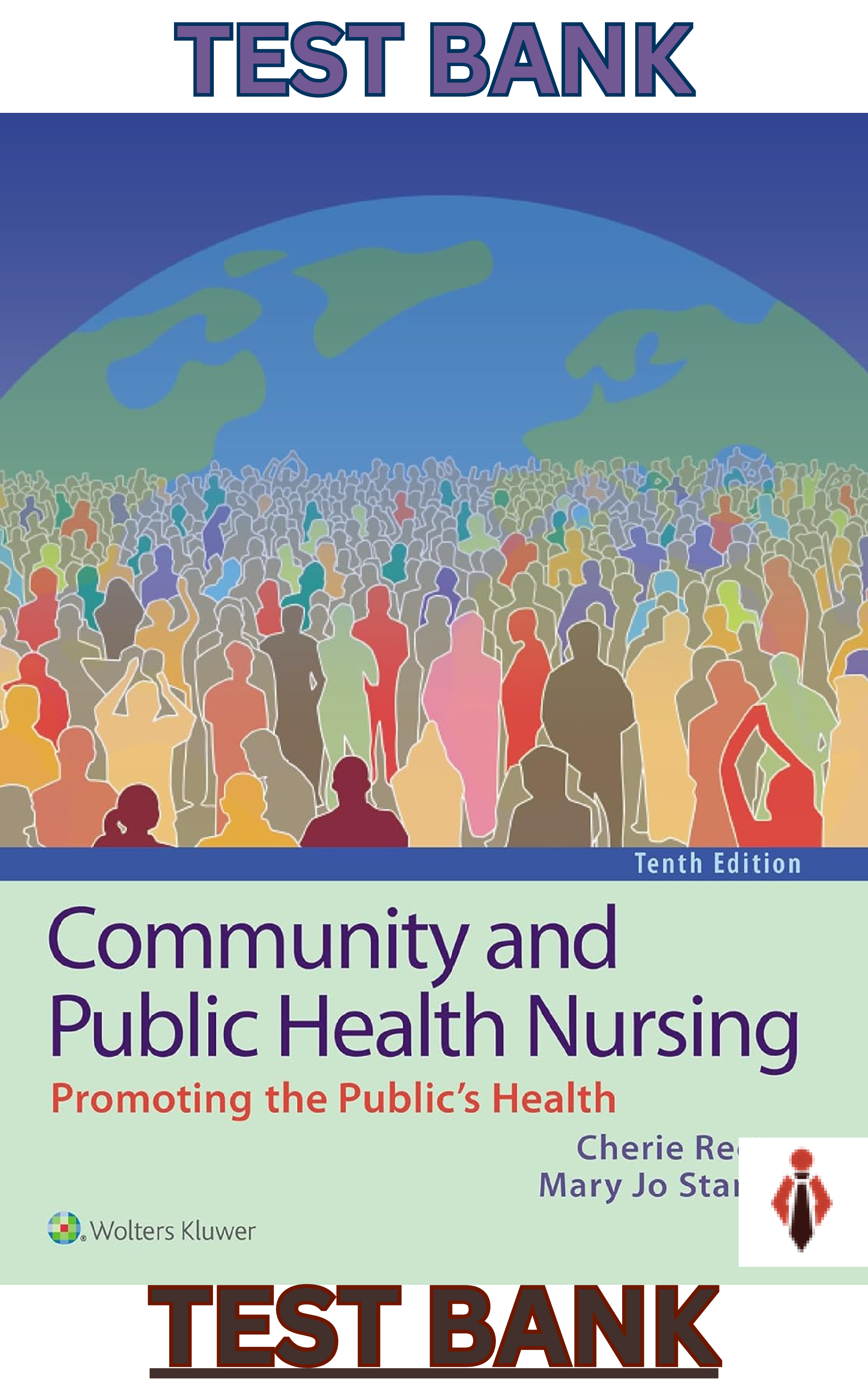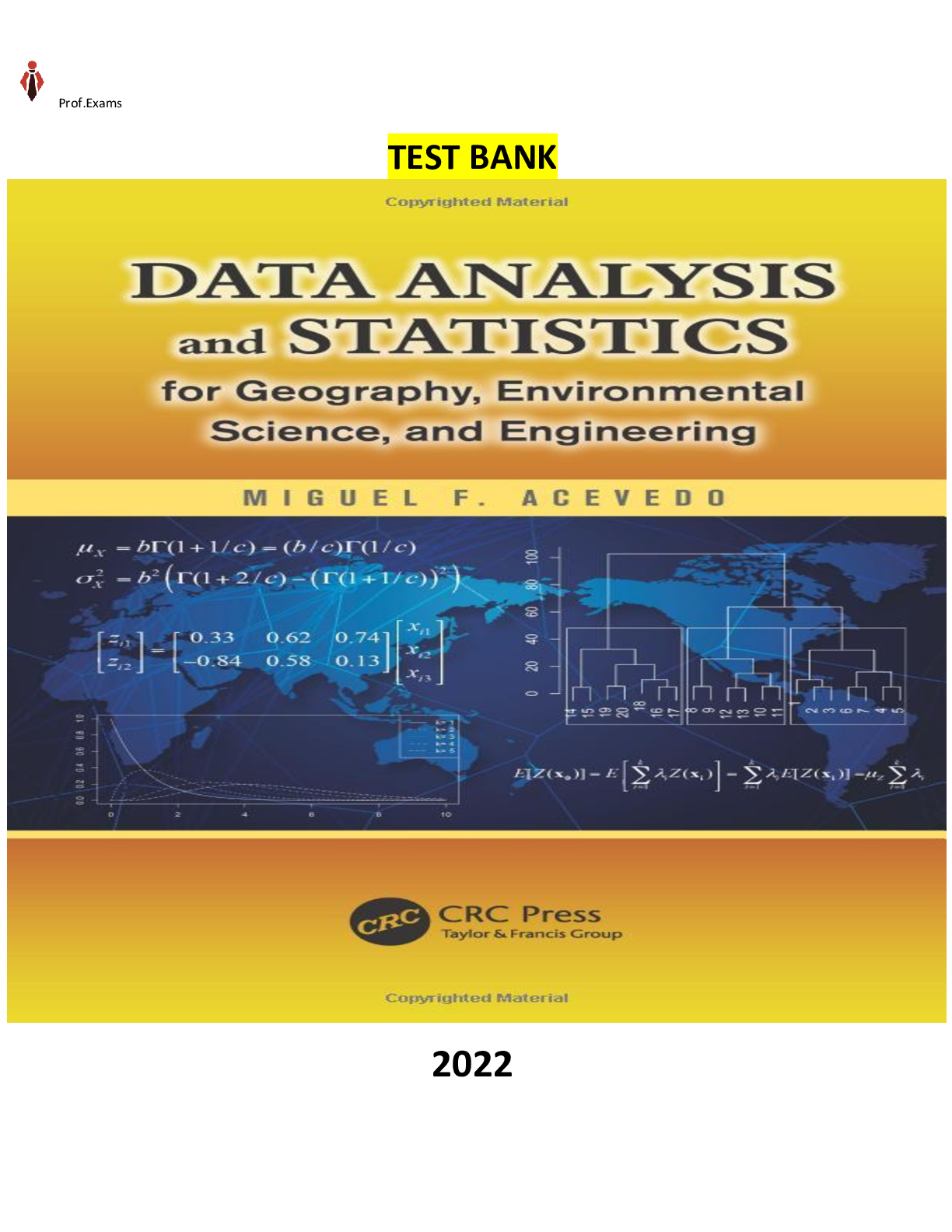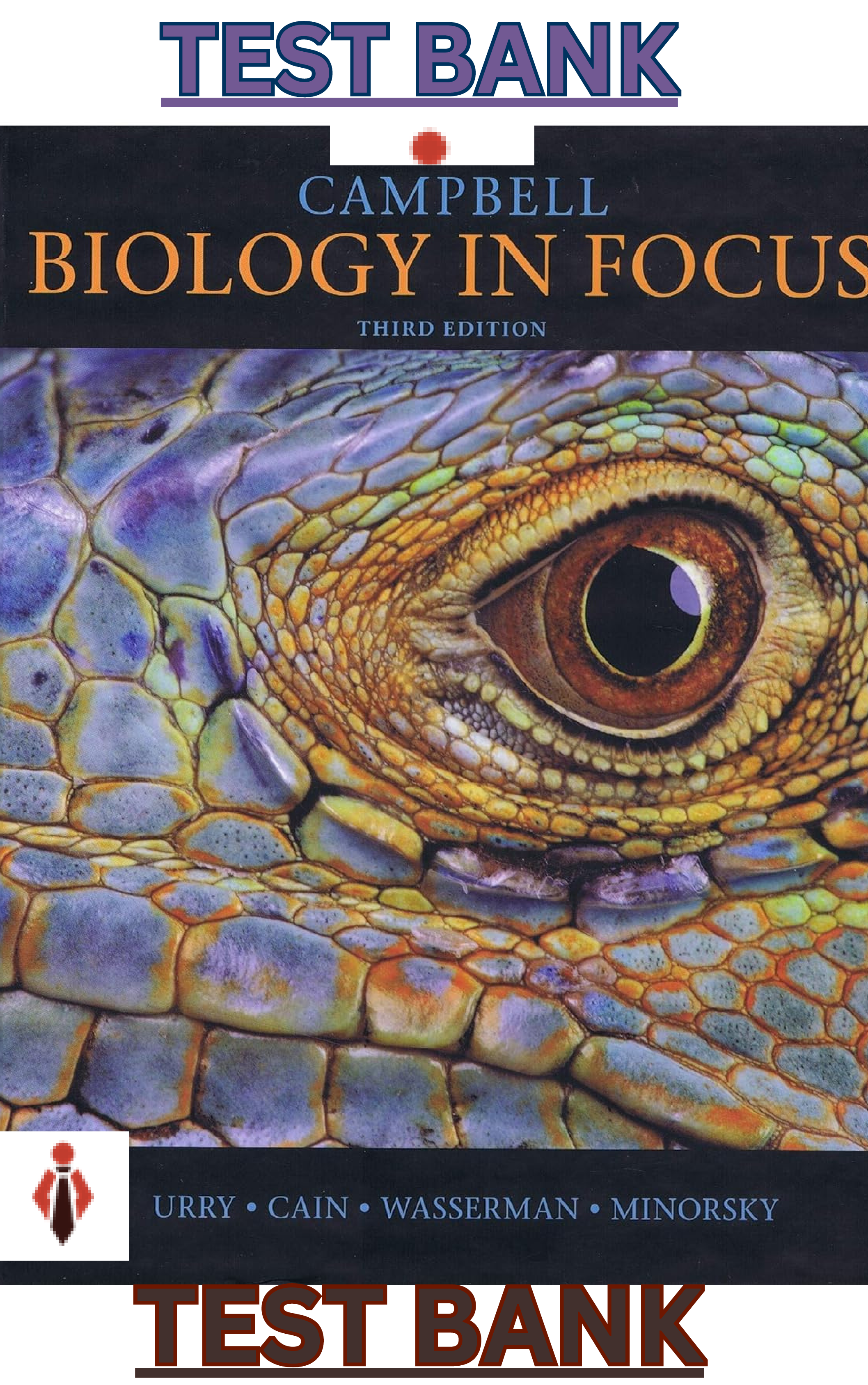*NURSING > TEST BANKS > TEST BANK - Concise Guide to Child and Adolescent Psychiatry (Concise Guides) 5th Edition by Mina K. (All)
TEST BANK - Concise Guide to Child and Adolescent Psychiatry (Concise Guides) 5th Edition by Mina K. Dulcan , Rachel R. Ballard , Poonam Jha, Julie M. Sadhu.docx
Document Content and Description Below
TEST BANK - Concise Guide to Child and Adolescent Psychiatry (Concise Guides) 5th Edition by Mina K. Dulcan , Rachel R. Ballard , Poonam Jha, Julie M. Sadhu. Concise Guide to Child and Adolescent Psy... chiatry (Concise Guides) 5th Edition by Mina K. Dulcan , Rachel R. Ballard , Poonam Jha, Julie M. Sadhu ISBN-10 1615370781 ISBN-13 978-1615370788 Test bank for Concise Guide to Child and Adolescent Psychiatry (Concise Guides) 5th Edition ISBN-10 1615370781 ISBN-13 978-1615370788 THIS IS NOT THE ACTUAL BOOK. YOU ARE BUYING it is the Official Test Bank in e-version INSTANT DOWNLOAD >The test bank is what most professors use as a template when making exams for their students, which means there’s a very high chance that you will see the exact questions in the tests! >The file is either in.pdf, excel, or zipped in the package and can easily be read on PCs and Macs. >Delivery is INSTANT. You can download the files IMMEDIATELY once payment is done. If you have any questions, please feel free to contact us. Our response is the fastest. All questions will always be answered in 6 hours, most of the time within 30mins. We also faced similar difficulties when we were students, and we understand how you feel. But now, with the Official Test Bank, you will be able to * Anticipate the type of the questions that will appear in your exam. * Know the correct answers to those questions. * Reduce the hassle and stress of your student life. * Improve your studying and get a better grade! * Get prepared for examination questions. SturdyyDrone * Save you time and help you understand the material. 1–1 DSM-5 conditions relevant to children and adolescents that may be a focus of clinical attention . . . 4 2 Evaluation and Treatment Planning 2–1 Outline of biopsychosocial history. . . . . . . . . . . . . . . 8 2–2 Dimensions of temperament . . . . . . ..... . . . . . .. 11 2–3 Temperament clusters . . . . . . . . . . . . . . . . . . . . . . . 11 2–4 Mentalstatus examination... . . . . . ..... . . . . . .. 12 2–5 Familydevelopmental tasks.. . . . . . ..... . . . . . .. 13 2–6 Examples of standardized diagnostic assessment interviews . . . . . . . . . . . . . . . . . . . . . . . 15 2–7 Individually administered tests of intellectual capacity, learning, and adaptive functioning . . . . . . 16 3 Neurodevelopmental Disorders 3–1 Clinical features of intellectual disability . . . . . . . . 27 3–2 Psychosocial causes of intellectual disability . . . . . 30 3–3 Biological causes of intellectual disability. . . . . . . . 31 3–4 Suggested medical contributions to etiology of attention-deficit/hyperactivity disorder . . . . . . . . . . 57 3–5 Child Attention Problems (CAP) Rating Scale . . . . 65 3–6 Child Attention Problems (CAP) Rating Scalescoring ... . . . . . ..... . . . . . ..... . . . . . .. 66 3–7 DSM-5 specific learning disorders. . . . . . . . . . . . . . 72 Introduction 6–1 Developmental differences in DSM-5 criteria for depressive disorders . . . . . ..... . . . . . 105 7 Anxiety Disorders 7–1 Commonnormalfears . . ..... . . . . . ..... . . . . . 116 7–2 Causesofschool absenteeism.. . . . . . ..... . . . . . 119 10 Feeding and Eating Disorders 10–1 Physical signs and symptoms and complications associated with anorexia nervosa and bulimia nervosa. .. . . . . . . .. .. . . . . . . .. .. . . . . . 180 10–2 Differential diagnosis of anorexia nervosa . . . . . . . 183 11 Elimination Disorders 11–1 Medical causes of urinary incontinence . . . . . . . . . 195 14 Disruptive, Impulse-Control, and Conduct Disorders 14–1 DSM-5 symptom criteria for oppositional defiant disorder and suggested epidemiological cutoff frequencies . ..... . . . . . ..... . . . . . ..... . . . . . 227 14–2 Common psychological characteristics of children and adolescents with conduct disorder . . . 232 15 Substance-Related and Addictive Disorders 15–1 Risk factors associated with serious substanceabuse in adolescence . . . . . ..... . . . . . 247 6 Depressive Disorders SturdyyDrone children and adolescents . . . . . . . . . . . . . . . . . . . . 256 16–2 Outlineofemergency history. . . . . . ..... . . . . . . 257 16–3 Psychiatric emergency medical evaluation . . . . . . 259 16–4 Options for emergency dispositions. . . . . . . . . . . . 259 16–5 Risk factors for repeat suicide attempt. . . . . . . . . . 263 16–6 Causes of out-of-control behavior in children and adolescents . . . . . . . . . . . . . . . . . . . . 272 17 Psychopharmacology 17–1 Stimulant preparations. . . . . . . . . . . . . . . . . . . . . . 311 17–2 Clinical effects of stimulant medications. . . . . . . . 315 17–3 Side effects of stimulant medications . . . . . . . . . . 320 17–4 Antidepressant medications most often used inchildren andadolescents .. . . . . . ..... . . . . . . 329 17–5 Antipsychoticmedications .. . . . . . ..... . . . . . . 344 18 Psychosocial Treatments 18–1 Common themes of individual therapies . . . . . . . . 376 16 Special Clinical Circumstances 16–1 Common psychiatric emergencies in Much like the patients on which it focuses, the field of pediatric mental health continues to grow and develop. Among other advances, the body of clinical research and the number of empirically supported treatments have grown, evaluation practices have been refined, and awareness of emotional and behavioral problems in youth has increased. Stay up-to-date on significant DSM-5 changes to psychiatric nomenclature and criteria-and the developments that have spurred them-with the Concise Guide to Child and Adolescent Psychiatry.,br>This fifth edition prunes older content while distilling and incorporating clinically relevant findings, and features: Reorganized diagnostic chapters that reflect updates to DSM-5Tables of selected diagnostic criteria from DSM-5 for quick reference Relevant treatment methods for each section on a specific disorder or clinical situationAn informative chapter dedicated to pharmacological treatments-from stimulant medications and antidepressants to antipsychotics and anticonvulsants Suggested additional readings for those interested in learning more about particular topics Recommended published and on-line information resources for parentsAn indispensable primer on child and adolescent psychiatry for medical and mental health students and clinical trainees, this guide also serves as an ideal, quick-reference update for practicing physicians, nurses, and advanced practice nurses. Complex theoretical notions, new research, and areas of controversy have been simplified in the interest of brevity and ease of reference, making this a useful resource for professionals in special education, child welfare, and juvenile justice, as well as parents. [Show More]
Last updated: 2 years ago
Preview 1 out of 382 pages
 5th Edition by Mina K.png)
Buy this document to get the full access instantly
Instant Download Access after purchase
Buy NowInstant download
We Accept:

Reviews( 1 )

by Acardona313@gmail.com · 2 years ago
$33.50
Can't find what you want? Try our AI powered Search
Document information
Connected school, study & course
About the document
Uploaded On
Feb 11, 2023
Number of pages
382
Written in
Additional information
This document has been written for:
Uploaded
Feb 11, 2023
Downloads
1
Views
270














